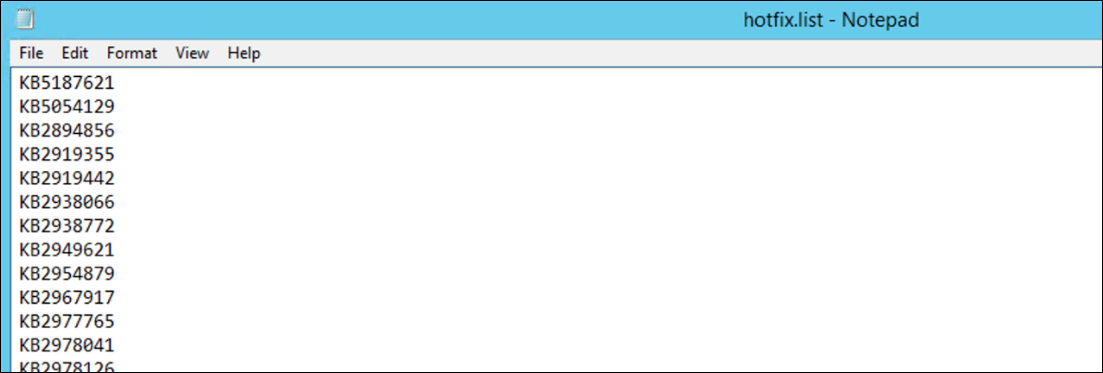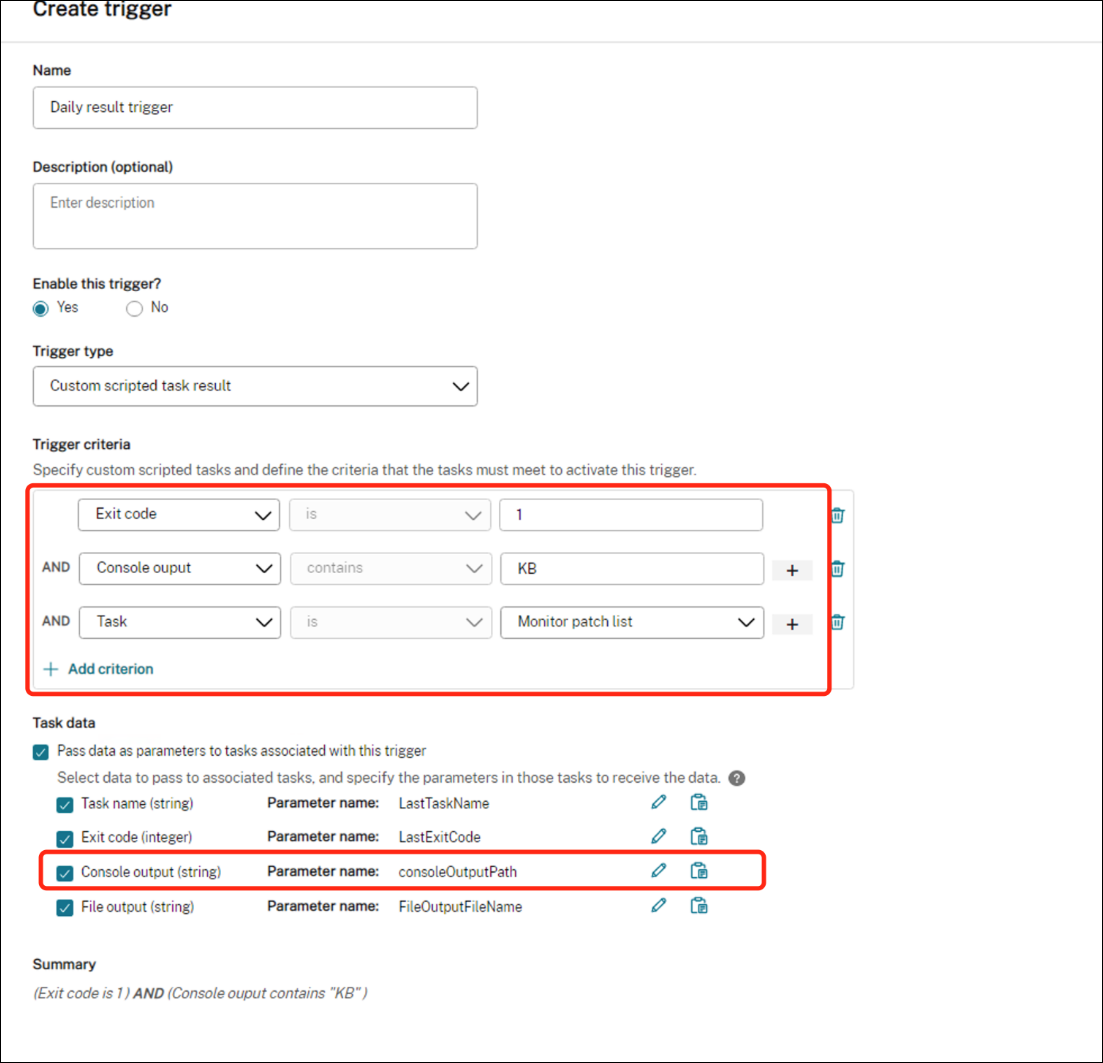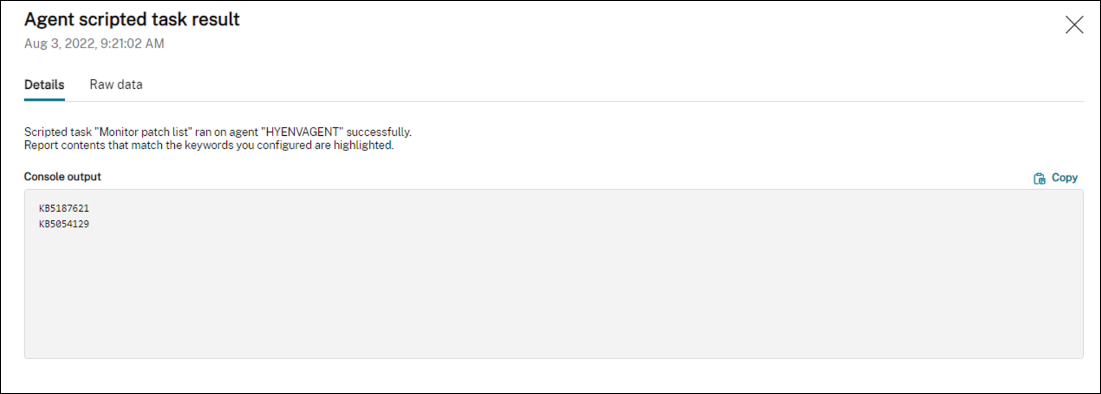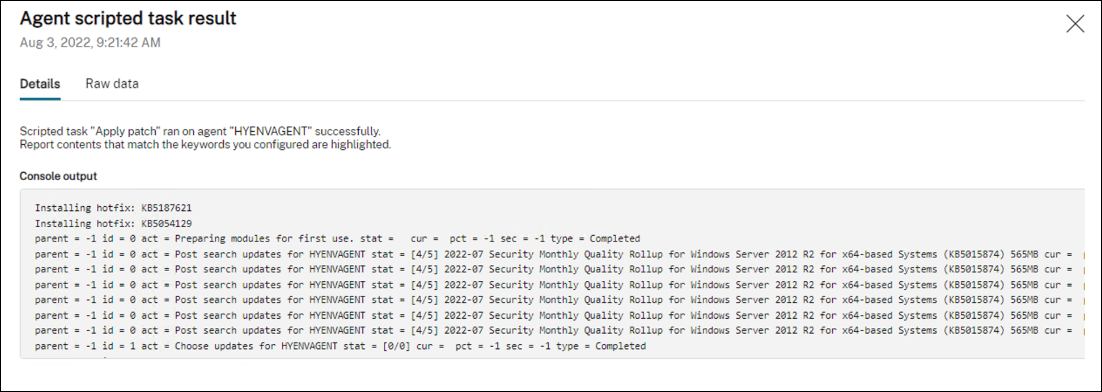-
-
-
Automatically apply Windows updates using scripted tasks
-
Automatically back up configuration sets using WEM APIs and Windows PowerShell
-
Manage DaaS-provisioned non-domain-joined machines using WEM
-
Protect Citrix Workspace™ environments using process hierarchy control
-
Troubleshoot VDA registration and session launch issues using scripted tasks
-
Use Windows events as triggers to detect VDA registration issues
-
This content has been machine translated dynamically.
Dieser Inhalt ist eine maschinelle Übersetzung, die dynamisch erstellt wurde. (Haftungsausschluss)
Cet article a été traduit automatiquement de manière dynamique. (Clause de non responsabilité)
Este artículo lo ha traducido una máquina de forma dinámica. (Aviso legal)
此内容已经过机器动态翻译。 放弃
このコンテンツは動的に機械翻訳されています。免責事項
이 콘텐츠는 동적으로 기계 번역되었습니다. 책임 부인
Este texto foi traduzido automaticamente. (Aviso legal)
Questo contenuto è stato tradotto dinamicamente con traduzione automatica.(Esclusione di responsabilità))
This article has been machine translated.
Dieser Artikel wurde maschinell übersetzt. (Haftungsausschluss)
Ce article a été traduit automatiquement. (Clause de non responsabilité)
Este artículo ha sido traducido automáticamente. (Aviso legal)
この記事は機械翻訳されています.免責事項
이 기사는 기계 번역되었습니다.책임 부인
Este artigo foi traduzido automaticamente.(Aviso legal)
这篇文章已经过机器翻译.放弃
Questo articolo è stato tradotto automaticamente.(Esclusione di responsabilità))
Translation failed!
Automatically apply Windows updates using scripted tasks
As an administrator, you might have many devices to manage. They might exist in different domains and have different security levels or Windows OS versions. Updating those devices in a timely manner to prevent potential risks can be a tedious task. To achieve this goal, you might do the following:
-
Collect information related to updates.
-
Draw comparisons between the collected information to identify the devices where updates are missing.
-
Apply one or more updates to relevant devices one by one.
Workspace Environment Management™ (WEM) provides you with a scripted task feature that simplifies the task of applying updates to your devices.
All you need to do is configure two scripted tasks. A general workflow is as follows:
-
Prepare two scripts and create a file
-
Add two scripted tasks
-
Configure the two scripted tasks
-
View the task execution report
Prepare two scripts and create a file
-
Prepare a script that monitors available updates.
$List = Get-Content \\hyenvwemserver\share\hotfix.list $Applied = Get-HotFix | Select-Object -ExpandProperty HotFixID $ExitCode = 0 $List | ForEach-Object { if(-not ($Applied.Contains($_))) { Write-Host $_ $ExitCode = 1 } } Exit $ExitCode <!--NeedCopy--> -
Prepare another script that applies updates.
Param( [string]$consoleOutputPath ) $List = Get-Content $consoleOutputPath $List | ForEach-Object { Write-host "Installing hotfix: $_" Get-WindowsUpdate -Install -KBArticleID $_ } <!--NeedCopy--> -
Create a file that includes a list of updates.
Note:
Put this file in a place that the WEM agent can access, for example, in a shared path:
\\hyenvwenserver\share\hotfix.list.
Add two scripted tasks
The following information is supplemental to the guidance in Add a scripted task. To create the two scripted tasks, follow the general guidance in that article, minding the details below.
In Web Console > Scripted Tasks, add the two scripted tasks.

Configure the two scripted tasks
The following information is supplemental to the guidance in Configure a scripted task. To configure the two scripted tasks, follow the general guidance in that article, minding the details below.
-
Go to the relevant configuration set, navigate to Scripted Task Settings, and configure the “Apply updates” task.
In this example, the task is specifically configured as follows:
-
Select Yes to enable the task.
-
Clear Verify the signature before running the task.
-
In Triggers, create a “Scheduled” trigger as follows.

-
-
In the same configuration set, configure the “Monitor updates” task.
In this example, the task is specifically configured as follows:
-
Select Yes to enable the task.
-
Clear Verify the signature before running the task.
-
In Triggers, create a “Custom scripted task result” trigger as follows.

-
View the task execution report
After the tasks run successfully, you can view the results by checking the reports. For more information, see Reports. In this example, you can see the following reports:
Report summary:

Report detail of the “Apply updates” task:

Report detail of the “Monitor updates” task:

Share
Share
This Preview product documentation is Citrix Confidential.
You agree to hold this documentation confidential pursuant to the terms of your Citrix Beta/Tech Preview Agreement.
The development, release and timing of any features or functionality described in the Preview documentation remains at our sole discretion and are subject to change without notice or consultation.
The documentation is for informational purposes only and is not a commitment, promise or legal obligation to deliver any material, code or functionality and should not be relied upon in making Citrix product purchase decisions.
If you do not agree, select I DO NOT AGREE to exit.